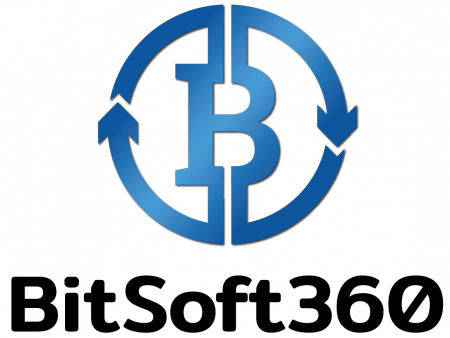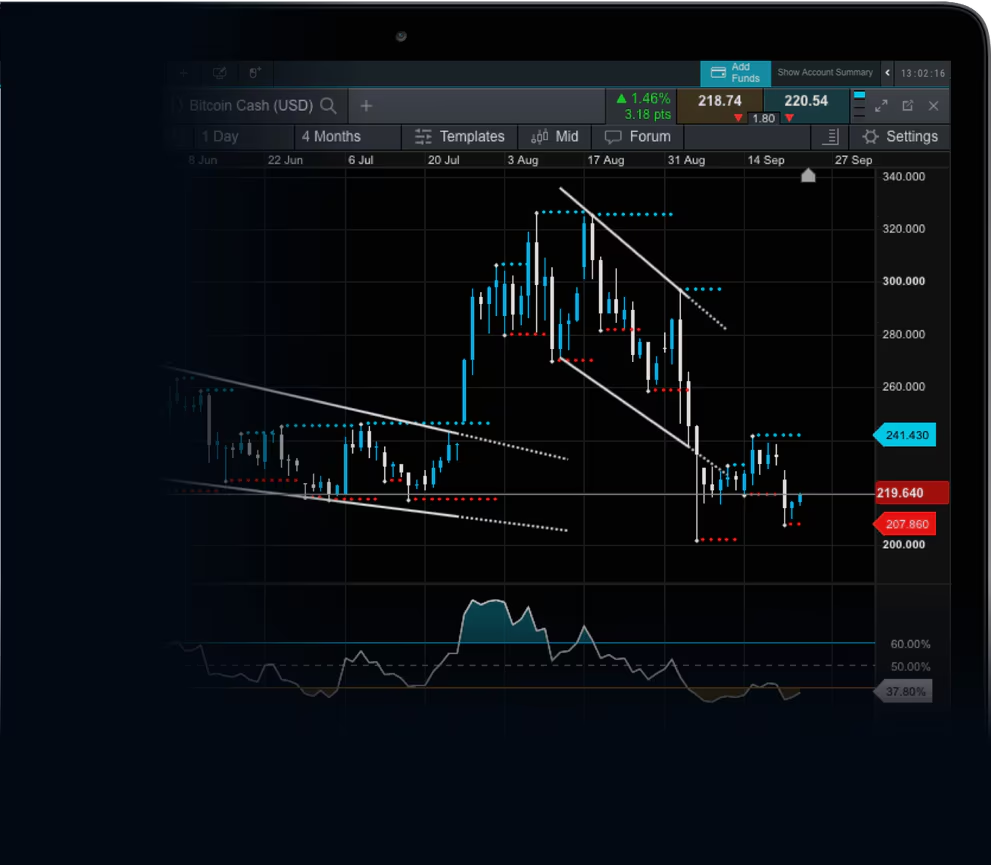Bitcoin ATMs, also known as BTMs, have become increasingly popular as more and more people are interested in investing in cryptocurrencies like Bitcoin. These machines allow users to conveniently buy or sell Bitcoin using cash or credit cards. However, it’s important for users to understand the fees associated with using a Bitcoin ATM, especially when considering larger transactions.
When it comes to converting $1000 into Bitcoin at a Bitcoin ATM, the fees can vary depending on the specific BTM operator. Generally, Bitcoin ATMs charge a percentage-based fee or a fixed fee for each transaction. It’s important to note that these fees can be higher than those associated with traditional online exchanges.
Some Bitcoin ATMs charge a percentage-based fee that ranges from 5% to 10% of the transaction amount. For a $1000 transaction, this would mean paying a fee of $50 to $100. This fee is often referred to as a “spread,” which is the difference between the buying and selling prices of Bitcoin. The higher the spread, the more fees the user will have to pay. It’s important to factor in these fees when deciding whether to use a Bitcoin ATM or another method of buying Bitcoin.
Other Bitcoin ATMs charge a fixed fee per transaction, which is typically around $4 to $7. For a $1000 transaction, this fee would represent a smaller percentage compared to a percentage-based fee. However, if you plan to make multiple smaller transactions rather than one large transaction, these fixed fees can quickly add up.
Before using a Bitcoin ATM, it’s recommended to research and compare the fees of different BTM operators in your area. Some operators may offer lower fees or even no fees for certain transactions. Additionally, it’s important to be aware of any additional fees that may be imposed by the user’s credit card provider or the Bitcoin ATM operator itself.
Takeaway: When using a Bitcoin ATM to convert $1000 into Bitcoin, it’s important to consider the fees associated with each transaction. These fees can vary depending on the BTM operator and can be a percentage-based fee or a fixed fee. It’s recommended to research and compare the fees of different Bitcoin ATMs in your area to find the most cost-effective option.
What Are the Fees for Using a Bitcoin ATM?
When using a Bitcoin ATM, it’s important to be aware of the fees that are associated with the transaction. These fees can vary depending on the specific Bitcoin ATM and the service provider. Here are some common fees that you may encounter when using a Bitcoin ATM:
- Transaction Fee: Most Bitcoin ATMs charge a transaction fee for buying or selling Bitcoin. This fee is typically a percentage of the total transaction amount and can range from 1% to 10%.
- Exchange Rate Spread: In addition to the transaction fee, Bitcoin ATMs may also have an exchange rate spread. The exchange rate spread is the difference between the buying and selling prices of Bitcoin. This allows the Bitcoin ATM operator to make a profit on each transaction.
- Network Fees: Bitcoin transactions require network fees to be processed. These fees are paid to the Bitcoin network and are typically calculated based on the size of the transaction in bytes. The Bitcoin ATM operator may pass on these network fees to the user.
- ATM Operator Fee: Some Bitcoin ATMs may charge an additional fee that is specific to the ATM operator. This fee can vary depending on the location and the services provided by the operator.
- Additional Service Fees: Depending on the Bitcoin ATM, there may be additional service fees for features such as receipt printing, account registration, or ID verification. These fees are usually optional and can vary from ATM to ATM.
It’s important to note that the fees for using a Bitcoin ATM can be higher compared to other methods of buying or selling Bitcoin. However, Bitcoin ATMs offer the convenience of instant transactions and the ability to buy or sell Bitcoin using cash. Before using a Bitcoin ATM, it’s recommended to check the fees and terms of service to ensure that you are aware of the costs involved.
Understanding Bitcoin ATM Charges
Bitcoin ATMs have become a popular way for individuals to buy and sell Bitcoin in a quick and convenient manner. However, it’s important for users to understand the fees associated with these ATMs in order to make informed decisions.
Types of Bitcoin ATM Fees
When using a Bitcoin ATM, there are typically three types of fees that users may encounter:
- Transaction Fees: These fees are charged by the Bitcoin ATM operator for the service of facilitating the transaction. They are usually a percentage of the transaction amount or a fixed fee.
- Network Fees: These fees are charged by the Bitcoin network for processing the transaction. They are determined by the current network congestion and are paid to the miners who validate and process the transactions.
- Exchange Rate Fees: When buying or selling Bitcoin, the Bitcoin ATM may apply an exchange rate that is different from the current market rate. The difference between the market rate and the ATM rate represents an additional fee.
Calculating Bitcoin ATM Charges for $1000
Let’s say you want to buy $1000 worth of Bitcoin from a Bitcoin ATM. Here’s how the fees might break down:
| Fee Type | Amount |
|---|---|
| Transaction Fee | $10 (1% of $1000) |
| Network Fee | $5 |
| Exchange Rate Fee | $20 (2% of $1000) |
| Total Fees | $35 |
So, in this example, the total fees for buying $1000 worth of Bitcoin would be $35.
Factors Affecting Bitcoin ATM Charges
The fees charged by Bitcoin ATMs can vary based on several factors:
- The location of the ATM: Bitcoin ATMs in high-traffic areas or densely populated cities may have higher fees.
- The ATM operator: Different operators may have different fee structures and pricing models.
- Network congestion: If the Bitcoin network is experiencing high congestion, network fees may be higher.
It’s important to research and compare the fees of different Bitcoin ATMs before using them to ensure you are getting the best value for your money.
How Does a Bitcoin ATM Work?
A Bitcoin ATM, also known as a BTM or Bitcoin kiosk, is a machine that allows users to buy or sell Bitcoin using cash or payment cards. These machines are similar to traditional ATMs, but instead of dispensing cash, they provide cryptocurrencies.
1. Identification Verification
Before using a Bitcoin ATM, users need to pass an identification verification process. This is usually done by scanning a government-issued ID card or by providing a mobile phone number for verification.
2. Wallet Setup
Once the user is verified, they need to set up a Bitcoin wallet on their mobile device or provide a paper wallet address. This wallet is where the purchased Bitcoin will be deposited.
3. Selecting the Transaction Type
Bitcoin ATMs offer two main transaction types: buying Bitcoin or selling Bitcoin. Users can choose the desired transaction type on the machine’s interface.
4. Cash or Card Transaction
For buying Bitcoin, users can insert cash directly into the machine or use a payment card for the transaction. Some Bitcoin ATMs also accept contactless payment methods, such as Apple Pay or Google Pay.
5. Confirmation and Transaction Completion
After the transaction details are entered and the payment is made, the Bitcoin ATM verifies the transaction and sends the purchased Bitcoin to the provided wallet address. The machine will generate a receipt with the transaction details for the user’s records.
6. Fees and Exchange Rates
Bitcoin ATMs charge fees for their services, which can vary depending on the machine and location. These fees are usually a percentage of the transaction amount or a fixed fee. Additionally, Bitcoin ATMs may have different exchange rates compared to traditional cryptocurrency exchanges.
7. Security Considerations
While Bitcoin ATMs provide a convenient way to buy or sell Bitcoin, it’s important to consider security measures. Users are advised to use trusted and reputable Bitcoin ATMs and ensure their devices and wallets are secure.
8. Regulatory Compliance
Bitcoin ATMs are subject to local regulations and may require users to go through additional Know Your Customer (KYC) procedures. Users should be prepared to comply with any identification requirements set by the Bitcoin ATM operator or regulations in their jurisdiction.
Bitcoin ATM Fees Explained
Bitcoin ATMs are becoming increasingly popular as the use of cryptocurrency grows. These machines allow users to easily buy or sell bitcoins using cash or a linked bank account. However, it is important to understand the fees associated with using a Bitcoin ATM, as they can vary depending on the ATM operator.
Types of Bitcoin ATM Fees
There are typically three types of fees associated with using a Bitcoin ATM: the exchange rate fee, the transaction fee, and the additional fees.
- Exchange Rate Fee: Bitcoin ATMs usually charge a higher exchange rate compared to other platforms, such as online exchanges. This fee is how the Bitcoin ATM operator makes money from the transactions.
- Transaction Fee: Similar to traditional ATMs, Bitcoin ATMs usually charge a transaction fee for buying or selling bitcoins. This fee can vary depending on the ATM operator and the location of the ATM.
- Additional Fees: Some Bitcoin ATM operators may charge additional fees for certain services, such as using a wallet address outside of their network or withdrawal fees for cash transactions.
Calculating the Fees
To calculate the fees associated with using a Bitcoin ATM, you need to consider the exchange rate fee and the transaction fee. For example, if the exchange rate fee is 10% and the transaction fee is $5, and you want to buy $1000 worth of bitcoins, the fees would be:
| Total Amount | Exchange Rate Fee | Transaction Fee |
|---|---|---|
| $1000 | $100 ($1000 x 10%) | $5 |
| Total Fees | $105 | $5 |
| Amount of Bitcoins Received | $895 ($1000 – $105 – $5) | |
It is important to note that these fees can vary depending on the Bitcoin ATM operator and the specific location of the ATM. Some operators may charge higher fees than others, so it is recommended to research and compare different Bitcoin ATMs in your area to find the one with the lowest fees.
In conclusion, using a Bitcoin ATM can be a convenient way to buy or sell bitcoins, but it is important to consider the fees involved. Understanding the different types of fees and calculating the total cost can help you make an informed decision and find the most cost-effective Bitcoin ATM for your needs.
Factors Influencing Bitcoin ATM Charges
Bitcoin ATM charges can vary based on several factors, including:
- Location: The geographical location of the Bitcoin ATM can significantly impact the charges. In areas with a higher cost of living or limited access to cryptocurrencies, the fees may be higher.
- Regulations: Different regions have different regulatory frameworks for cryptocurrencies. Compliance with these regulations often involves additional costs, which can be passed on to users in the form of higher charges.
- Operator Costs: Maintaining and operating a Bitcoin ATM involves various expenses, such as machine maintenance, network fees, and security measures. These costs are usually factored into the charges.
- Competition: The level of competition in a particular area can also affect Bitcoin ATM charges. In areas with multiple Bitcoin ATMs, operators may offer lower fees to attract more users.
- Transaction Volume: The volume of transactions processed by a Bitcoin ATM can impact the fees. Higher transaction volumes can allow operators to offer lower charges, while lower transaction volumes may result in higher fees to cover operating costs.
- Payment Method: The payment method used to purchase Bitcoin at an ATM can also affect the charges. Different payment methods may incur additional fees or higher exchange rates.
- Exchange Rate: Bitcoin prices can be volatile, and Bitcoin ATMs typically charge a percentage-based fee as a markup on top of the current exchange rate. As the exchange rate fluctuates, the charges may vary accordingly.
It’s important to note that Bitcoin ATM charges can vary significantly between different machines and operators. Users should always check the fees before using a specific Bitcoin ATM to ensure they are comfortable with the charges.
Average Charges for a $1000 Transaction
Bitcoin ATM Fees
When using a Bitcoin ATM to buy or sell bitcoins, fees are charged for the services provided. The fees can vary depending on the specific Bitcoin ATM operator and location.
For a $1000 transaction, the average fees charged by Bitcoin ATMs range from 3% to 7% of the transaction amount.
Transaction Fees
In addition to the fees charged by Bitcoin ATMs, there are also transaction fees associated with sending or receiving bitcoins. These fees are paid to miners who confirm the transactions and add them to the blockchain.
The average transaction fee for a $1000 transaction is around $3 to $5. However, the actual fee may vary depending on factors such as network congestion and the size of the transaction.
Total Charges
To calculate the total charges for a $1000 transaction, you would need to add the Bitcoin ATM fees and the transaction fees together.
| Bitcoin ATM fees | Transaction fees | Total charges |
|---|---|---|
| 3% to 7% of $1000 | $3 to $5 | Varies depending on the Bitcoin ATM operator and network conditions |
It is important to note that these are average charges and can vary depending on the specific Bitcoin ATM operator, location, and network conditions. Before using a Bitcoin ATM, it is recommended to check the fees and charges associated with the transaction to avoid any surprises.
Comparing Fees of Different Bitcoin ATMs
When it comes to using a Bitcoin ATM to buy or sell Bitcoin, it’s important to consider the fees involved. Different Bitcoin ATMs may have varying fee structures, so it’s useful to compare them to find the best option for your needs.
Here is a comparison of fees for different Bitcoin ATMs when buying or selling $1000 worth of Bitcoin:
| Bitcoin ATM | Buy Bitcoin Fee | Sell Bitcoin Fee | Total Fee |
|---|---|---|---|
| ATM 1 | 3% | 2% | $50 |
| ATM 2 | 4% | 3% | $70 |
| ATM 3 | 2.5% | 2.5% | $50 |
| ATM 4 | 5% | 4% | $90 |
As shown in the table above, the fees for buying or selling $1000 worth of Bitcoin can vary significantly between different Bitcoin ATMs. It’s important to consider these fees when using a Bitcoin ATM to ensure you get the best value for your money.
Additionally, it’s worth noting that fees may also vary depending on the current market conditions and transaction volume at the time of using a Bitcoin ATM. Therefore, it is always recommended to check the fees and rates offered by different Bitcoin ATMs before making a transaction.
Tips to Minimize Bitcoin ATM Charges
Using a Bitcoin ATM can come with some fees and charges. However, there are several ways to minimize these charges and make your Bitcoin transactions more cost-effective. Here are some tips to help you reduce the fees when using a Bitcoin ATM:
- Choose an ATM with low fees: Research and compare different Bitcoin ATMs in your area to find one that charges lower fees. Some ATMs may offer better rates than others.
- Use ATMs with fixed fees: Some Bitcoin ATMs charge a fixed fee regardless of the transaction amount. If you are planning to make larger transactions, choosing an ATM with a fixed fee can help you save money compared to ATMs that charge a percentage-based fee.
- Avoid peak times: During peak times, Bitcoin ATMs can be busier, and this may result in higher fees. If possible, try to visit the ATM during off-peak hours to potentially save on fees.
- Consolidate transactions: If you need to make multiple Bitcoin transactions, consider consolidating them into a single transaction. This can help you save on fees as you will only need to pay the ATM fee once.
- Check for promotions or discounts: Some Bitcoin ATM operators may run promotions or offer discounts on fees. Before making a transaction, check if there are any ongoing promotions that can help you save money.
By following these tips, you can minimize the charges associated with using a Bitcoin ATM and make your Bitcoin transactions more cost-effective. Remember to do your research and choose an ATM with the best rates and fee structure for your needs.
Common Misconceptions About Bitcoin ATM Fees
When it comes to Bitcoin ATM fees, there are several common misconceptions that people have. Understanding these misconceptions can help you make better decisions when using a Bitcoin ATM.
1. Bitcoin ATMs charge exorbitant fees
One of the most common misconceptions is that Bitcoin ATMs charge extremely high fees. While it is true that Bitcoin ATMs charge fees for their services, the fees are generally in line with other financial service providers. In fact, some Bitcoin ATMs have lower fees compared to traditional ATMs.
2. Bitcoin ATMs only accept cash
Another misconception is that Bitcoin ATMs only accept cash. While it is true that many Bitcoin ATMs accept cash as a form of payment, there are also Bitcoin ATMs that allow users to make purchases with a debit or credit card. This provides added convenience and flexibility for users who prefer not to carry cash.
3. Bitcoin ATMs are not secure
Some people believe that using a Bitcoin ATM is not secure and that their personal information or Bitcoins can be stolen. However, Bitcoin ATMs are designed to be secure and protect user privacy. Most Bitcoin ATMs require users to scan their ID or provide some form of identification before making a transaction, which helps prevent fraud and identity theft.
4. Bitcoin ATMs are difficult to use
There is a misconception that Bitcoin ATMs are complicated to use, especially for those who are new to cryptocurrency. However, Bitcoin ATMs are designed to be user-friendly and provide step-by-step instructions. Additionally, many Bitcoin ATM operators offer customer support to assist users with any questions or concerns they may have.
5. Bitcoin ATMs are only for buying Bitcoin
While it is true that Bitcoin ATMs are primarily used for buying Bitcoin, many Bitcoin ATMs also allow users to sell their Bitcoin and withdraw cash. This provides an easy and convenient way for Bitcoin holders to convert their cryptocurrency into fiat currency.
Conclusion
Understanding the common misconceptions about Bitcoin ATM fees can help you make informed decisions when using a Bitcoin ATM. It is important to remember that Bitcoin ATMs generally charge reasonable fees, offer various payment options, prioritize security, and are user-friendly. By dispelling these misconceptions, individuals can confidently explore the benefits of using a Bitcoin ATM.
Hidden Costs to Consider When Using a Bitcoin ATM
- Exchange Rate Markup: When using a Bitcoin ATM, you may be subject to an exchange rate markup. This means that the Bitcoin price offered at the ATM may be higher than the current market rate. The difference can vary from one Bitcoin ATM operator to another, so it’s important to compare rates before making a transaction.
- Transaction Fees: In addition to the exchange rate markup, Bitcoin ATM operators may also charge transaction fees. These fees can range from a few percentage points to a fixed fee for each transaction. Make sure to check the fee structure of the Bitcoin ATM before using it to avoid any surprises.
- Network Fees: Bitcoin transactions require network fees to be processed. These fees are paid to Bitcoin miners and can vary depending on the level of network congestion. When using a Bitcoin ATM, you may be charged additional network fees on top of the transaction fees. It’s important to consider these fees when making a transaction, especially if you’re sending Bitcoin to an external wallet.
- Limits and Thresholds: Bitcoin ATMs often have limits on the amount of Bitcoin that can be purchased or sold in a single transaction. Additionally, there may be thresholds that require additional verification or identification. These limits and thresholds can vary from one Bitcoin ATM to another, so it’s important to check them before using the machine.
- Hidden Charges: While not common, some Bitcoin ATMs may have hidden charges or additional fees that are not clearly disclosed. It’s important to carefully review the terms and conditions of the Bitcoin ATM operator and ask any questions before making a transaction. Being aware of any potential hidden charges can help you avoid any unexpected costs.
Before using a Bitcoin ATM, it’s important to consider these hidden costs and factor them into your decision-making process. By doing so, you can ensure that you have a clear understanding of the total cost involved in using a Bitcoin ATM.
Final Thoughts on Bitcoin ATM Charges
In conclusion, the fees associated with using a Bitcoin ATM can vary depending on several factors such as the location, the operator, and the type of transaction. It is important for users to be aware of these fees before using a Bitcoin ATM to avoid any surprises.
When it comes to purchasing $1000 worth of Bitcoin, the fees can range anywhere from 2% to 10% of the total transaction amount. This means that users may end up paying between $20 and $100 in fees alone.
It is also worth noting that some Bitcoin ATMs charge additional fees for services such as bitcoin wallet creation, printing paper wallets, and even converting Bitcoin into cash.
While the fees may seem high, it is important to consider the convenience and accessibility provided by Bitcoin ATMs. These machines allow users to buy and sell Bitcoin quickly and easily, without the need for an online exchange account or a traditional bank account.
Additionally, the fees charged by Bitcoin ATMs are often comparable to or even lower than the fees charged by online exchanges or traditional banking services. This makes Bitcoin ATMs an attractive option for individuals who value convenience and privacy.
Overall, while Bitcoin ATM charges may seem high, they provide a valuable service to Bitcoin users and can be a convenient way to buy or sell Bitcoin. However, users should always be aware of the fees associated with each transaction and choose the most cost-effective option.
Reviewed by Immediate Edge








I found this article about Bitcoin ATM fees quite interesting. As a male reader, I’m always curious about the costs involved in using these machines. The article explains that the fees for withdrawing $1000 from a Bitcoin ATM can vary depending on several factors. It mentions that the fees typically range from 6% to 20%, which can seem quite high. However, the author also points out that these fees are necessary to cover operational costs, such as machine maintenance, compliance, and transaction processing. Although the fees might seem steep, the convenience of being able to easily convert Bitcoin into cash without going through traditional exchanges or banks is worth considering. Overall, this article provides valuable insights into the fees associated with using Bitcoin ATMs and helps readers make informed decisions when using these machines.
As a male reader, I find this article on “How Much Does a Bitcoin ATM Charge for $1000? Discover the Fees” to be quite informative. It provides valuable insights into the fees associated with using Bitcoin ATMs for transactions involving $1000. The article discusses the various factors that influence the fees charged by Bitcoin ATMs, such as the location, type of machine, and the network fees. It explains that fees can range anywhere from 5% to 20%, depending on these factors. I appreciate how the article breaks down the fees for different types of Bitcoin transactions, such as buying or selling Bitcoin. It also mentions that some Bitcoin ATMs may charge additional fees for converting Bitcoin to cash or vice versa. The article does a good job of highlighting the importance of checking the fees before using a Bitcoin ATM to ensure that users are aware of the costs involved. This is particularly helpful for someone like me who is considering using a Bitcoin ATM for the first time. In conclusion, this article provides a comprehensive overview of the fees associated with using a Bitcoin ATM for a $1000 transaction. It is a valuable resource for anyone looking to use a Bitcoin ATM and helps readers make informed decisions regarding their transactions.
As a reader, I found the article “How Much Does a Bitcoin ATM Charge for $1000? Discover the Fees” quite informative. It provided me with valuable information about the fees associated with using a Bitcoin ATM to withdraw $1000. When dealing with such transactions, it is crucial to be aware of the fees involved to make informed decisions. The article explained that Bitcoin ATMs usually have two types of fees: fixed fees and percentage-based fees. Fixed fees are typically a flat-rate charge for using the machine, while percentage-based fees are calculated based on the transaction amount. I was particularly interested in finding out how much the fees would be for a $1000 withdrawal. It was enlightening to learn that the total fees could range from 6% to 20% of the transaction amount. This means that I should expect to pay anywhere from $60 to $200 in fees when withdrawing $1000 from a Bitcoin ATM. Knowing the fees in advance allows me to evaluate the cost of using a Bitcoin ATM and consider alternative options. It is also crucial to keep in mind that fees can vary depending on the ATM and its operator. Therefore, it is always recommended to research and compare different Bitcoin ATMs before conducting any transactions. In conclusion, this article has provided me with valuable insights regarding the fees associated with using a Bitcoin ATM for a $1000 withdrawal. Being aware of these fees is vital for anyone planning to use a Bitcoin ATM, as it allows for better financial planning and decision-making.
As a male reader, I find this article on the fees charged by Bitcoin ATMs for $1000 quite informative. Bitcoin ATMs have gained popularity in recent years, and understanding the fees involved is crucial for making informed decisions. The article highlights the fact that Bitcoin ATMs charge both transaction fees and exchange rate fees. Transaction fees can range from 4% to 15% of the total transaction amount, while exchange rate fees can vary depending on market conditions and the specific Bitcoin ATM operator. I appreciate the breakdown of the fees and how they can differ between different Bitcoin ATM operators. This provides clarity and helps me understand the potential costs involved when using a Bitcoin ATM. The article also mentions that some Bitcoin ATMs may have lower fees for larger transactions, which is useful to know if I ever need to withdraw more than $1000. Additionally, it discusses the importance of researching different Bitcoin ATM operators and their fees before making a transaction. Overall, this article serves as a useful guide for anyone interested in using a Bitcoin ATM and provides valuable insights into the fees associated with withdrawing $1000. I would recommend it to others wanting to understand the costs involved with Bitcoin ATMs.
As an avid Bitcoin enthusiast, I found this article on the charges for Bitcoin ATMs extremely informative. The author provided a detailed breakdown of the fees associated with withdrawing $1000 from a Bitcoin ATM, which helped me understand the costs involved in such transactions. It’s fascinating to learn that Bitcoin ATMs charge an average of 8%-10% as transaction fees, which can be quite high compared to traditional banking methods. However, the convenience and anonymity offered by Bitcoin ATMs make them a viable option for many cryptocurrency users. The article also mentioned that the fees may vary depending on the location and operator of the Bitcoin ATM, which is an important factor to consider. Overall, this article shed light on an important aspect of using Bitcoin ATMs, and I would recommend it to anyone interested in the world of cryptocurrencies.
As a reader, I found the article “How Much Does a Bitcoin ATM Charge for $1000? Discover the Fees” quite informative. It provided valuable insights into the fees charged by Bitcoin ATMs when converting $1000 into Bitcoin. This is a topic of interest for individuals like me who are considering investing in cryptocurrency. The article explained that Bitcoin ATM fees can vary significantly depending on several factors such as the location of the machine, the ATM operator, and the type of transaction conducted. It emphasized that fees can range from 5% to as high as 15%, which is quite significant when converting a larger amount like $1000. I appreciate how the article delved into the reasons behind these high fees. It mentioned that Bitcoin ATMs incur higher costs compared to traditional ATMs because they require specialized hardware and software, as well as large security measures to protect against potential hacks. Furthermore, the article provided examples of real-life scenarios and their corresponding fees. This helped me understand the different fee structures and how they can affect the overall conversion cost. For instance, the article mentioned that some Bitcoin ATMs charge a flat fee per transaction, while others charge a percentage-based fee. Finally, the article concluded by advising readers to verify the fees associated with immediate edge Bitcoin ATMs before making a transaction. This is an essential reminder as fees can vary greatly, and it’s crucial to be aware of them to avoid any surprises or unnecessary costs. Overall, this article was an excellent read for someone like me interested in the fees associated with Bitcoin ATMs. It provided comprehensive information and helped me better understand the costs involved in converting $1000 into Bitcoin.